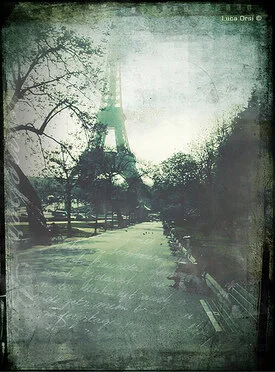by Bethany Ball
In those days, I thought that nothing could deter me from writing and so with eight hundred dollars I flew out to New York City where it was, I thought, that writing happened. I found a job at one of the smaller publishing houses and I was thrilled the day we were issued ID cards. They coincided with our acquisition of Salman Rushdie and new security guards who stood in the lobby of our office on 18th Street.
 It was there that I began to learn the mechanics of big city book publishing. I learned that getting a memoir on the New York Times bestseller list didn’t mean you had a winning novel in you--or that you would necessarily be inundated with fan mail. I learned that a writer could work on a manuscript for years and get only a ten thousand dollar advance, and that a five thousand print run is pretty good. I learned that it was imperative to have an agent, and that sometimes a good idea is only good enough for a magazine article. I learned that Oprah could sell more books than anyone and that she sent publishing houses into celebratory panics when she tapped a book for special recommendation. I learned the system of editorial assistants that could get an advanced reader copy of nearly any manuscript in the city, except maybe Harry Potter.
It was there that I began to learn the mechanics of big city book publishing. I learned that getting a memoir on the New York Times bestseller list didn’t mean you had a winning novel in you--or that you would necessarily be inundated with fan mail. I learned that a writer could work on a manuscript for years and get only a ten thousand dollar advance, and that a five thousand print run is pretty good. I learned that it was imperative to have an agent, and that sometimes a good idea is only good enough for a magazine article. I learned that Oprah could sell more books than anyone and that she sent publishing houses into celebratory panics when she tapped a book for special recommendation. I learned the system of editorial assistants that could get an advanced reader copy of nearly any manuscript in the city, except maybe Harry Potter.
My journalist father, never easily impressed, was nevertheless impressed that I’d found my way to a New York City publishing house. My mother liked getting advanced copies of Susan Grisham and Tom Wolfe.
But the dot-com world was beckoning and so I landed at Dreamlife.com in February of 2000. It was just a month before the climax of the dot-com bubble when the NASDAQ climbed to its peak of over five thousand. Our large office was in the newly refurbished Chelsea Market, what had once been the Nabisco Baking Company factory. Money was pumped in daily via the lifestyle guru Tony Robbins. I was told that the company was worth over sixty million dollars but it was hard to see how these companies with no revenue model could sustain themselves, much less our large salaries.



















